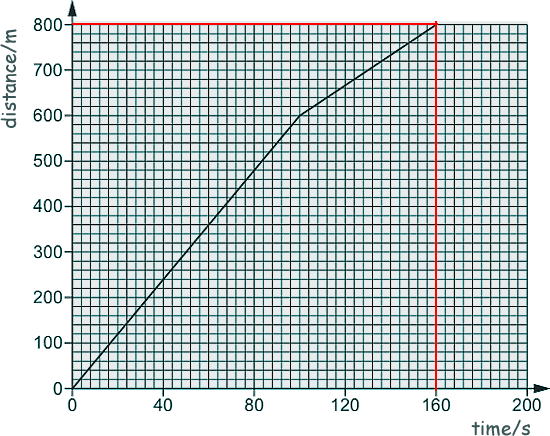Multiple Choice: Forces, Dynamics and Mechanics Q11. Use a distance-time graph for a journey to school to calculate the average speed for the journey.
Average speed = total distance travelled/total time taken Average speed = 800/160 = 5 m/s
Q12. Which of the following is Newton's Third Law?
Q13. On Mars the gravitational field strength is 4.0 N/kg. How much would a 60 kg person weigh on Mars? weight = mass x gfs weight = 60 x 4.0 = 240 N
Q14. A student sets up two cogs. Cog A has 10 teeth and cog B has 20 teeth.
Cog A is turned two times. How many times does cog B turn?
Q15. A car travels at 72 km/h. How fast is this in metres per second (m/s)? 72 km = 72,000 m 1 h = 60 x 60 s = 3,600 s speed = distance travelled/time taken speed = 72000/3600 = 20 m/s
Q16. Which one of the following uses of forces causes a rotation?
Q17. A skydiver falls from a plane.
What is the name of the downward force in the diagram?
Q18. A cyclist travels 750 m in 50 seconds. Calculate the speed of the cyclist. speed = distance travelled/time taken speed = 750/50 speed = 15 m/s
Q19. On the Moon the gravitational field strength is 1.6 N/kg. Calculate the weight of a 80 kg astronaut on the moon. weight = mass x gfs weight = 80 x 1.6 weight = 128 N
Q20. Look at the distance-time sketch graph below.
Which line shows the largest average speed?
|
Follow me...
|









